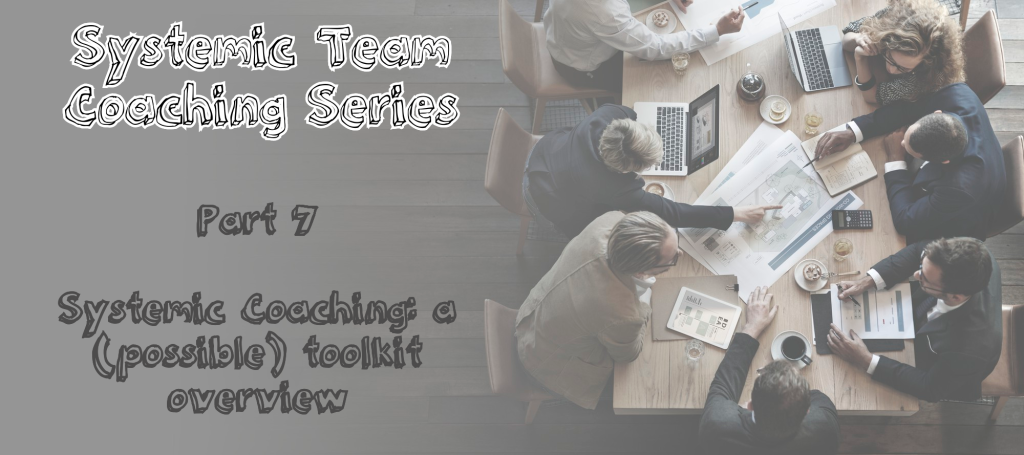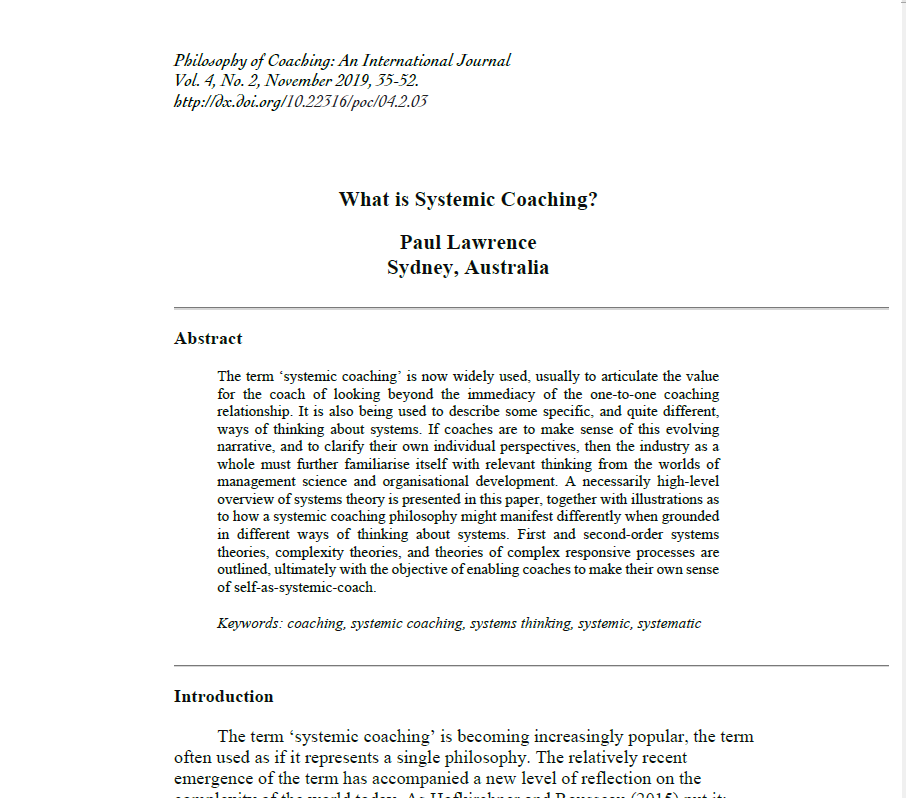
I have worked with many teams in a variety of organisations for several years and one thing I have noticed as a repeat experience is a preoccupation with both the anticipation of negative experiences and a default to make sense of things from this position. At first I judged people as just being negative, until I reflected on my own thinking and behaviour as a team member.
When I dug my heels into my own behavioural-thinking patterns I found that surprisingly I thought positive and negative things more or less equally – truthfully, some topics drew habitual negative valence more than others; but the biggest realisation for me was that I seemed to dwell more on the negative.
When I journalled and reflected on my past reflections I found that this was mainly because of a compulsion to solve for the negative, which branched into more analysis and more problems – which led to more analysis and more branches and so on, until at last I postponed the issue, or told myself that this is stuck and unsolvable.
Martin Saligman’s work was already familiar to me (thanks to Angela Duckworths book GRIT) at that stage and I recognised the pattern of learned helplessness (a problem is personal, pervasive and permanent), while also trying in vain sometimes to employ learned optimisimd (deliberate resilience practices, and challenging my own thoughts about permanence, specificity and universality of the problem), but my reframe and CBT (Cognitive Behavioural Therapy) or even NLP tricks didn’t always help.
Why? Because some of the problems could be reframed, I felt better about them, but the deeper work that was not up to me, was systemic in nature and some of this was out of my control. And so a cyclically redundant pattern emerged in my mind where I would then focus on my resistance towards the systemic problems that were outside of my control and above my level to influence, make up a story about who is involved, which one of them is to blame, and the negative cycle would take shape again.

This was almost automatic and it took me the discipline of mapping out my thoughts in causal loops to see it clearly. So, I became curious about whether this rings true as much for people in the teams I work with as it did for me; whether I was just a ‘negative Nancy’ needing more therapy to deal with my issues; or whether there was something here for me to learn about.
In retrospectives, workshops and training engagements I started paying deeper attention to the dialogue in the room. You see, teams as a whole are not that different in terms of how they make sense of things than we are as individuals. As an individual you think, reason, feel, express, argue, weigh, intuit, gather data, conclude etc – but for most of us, this happens internally and if not only internally, it happens while we talk to others. This invisible, almost seamless flow of consciousness happens between our parts – the parts that are brave and fearful, anxious and ambitious, caring and suspicious and so on. But in teams, this process doesn’t happen ‘internally’ – it happens in dialogue.

Firstly, teams usually talk about things with more or less balanced valence between things that are neutral and positive versus negative (at least by my judgement of it); but like me, they seem to want to dwell on the negative to fix or solve for it. This is a Negativity Bias, which both individually and collectively, we develop because the brain seems to respond favorably and enjoyably to intense experiences – whether positive or negative, but seems to more intensely coalesce with the body as a whole system to remember negative experiences, recall threats better than supports, elicit stronger reactions in the body and emotions (somatic) and recall more negative memories in moments like these than what it does positive memories in moments of ease.
This is supported by both psychological research and neurological research when it comes to individuals, but does it hold true for collectives? I suspected that there may be variance here, but I neither had the data to prove it, nor the experience (at that time) to clarify my intuitions. What I found in the research was that the concept of the negativity bias holds true in social settings like teams as well. In fact, ambiguous neutral narratives sometimes turn to unambiguous negative narratives.
But, couldn’t there be circumstances wherein which the teams ‘make-up’, the culture of the organisation, the relationships with support structures like leadership above their station or even just the nature of the team and the work they do have influence here?
For this I turned again to the work of Brene Brown where we are vulnerable about our fears, courageous about challenging our stories and assumptions and where we insist on belonging to a collective identity without connecting around a our resistance or hatred of a shared enemy or problem. What about Lencione’s 5 dysfunctions where the team starts with vulnerability based trust? Or Steve Covey’s Speed of Trust where Self-Trust grows to Relationship Trust and scales to Organisational Trust? To me, they seem to dance around similar fires.
This seemed to be one part of the puzzle – similarly to my personal experience where I could solve for some aspects in my inner world, it seemed that the inner world of the team could do quite a bit to address the preoccupation of the negative:

- If you think something needs to be done to address a problem, do it, don’t just talk about it
- Develop a bias for action based on a shared commitment to a higher goal that is held by the team
- Self reflect individually and as a team on how behaviours map to shared values
- Question our individual and collective narratives and the stories we construct to close the gaps on ambiguity, uncertainty or perceived injustice and keep each other accountable to remain open, courageous and action biased
However, just like I found limitations in my ability to address the branches of negative thinking to address problems that seem to be outside of my ability to influence or control, I started seeing teams who had strong and healthy inner worlds come up against similar challenges and also employ a preoccupation with wanting to dwell on and solve for the negative.
This usually translated to quick-fix solutions; postponement; or the destructive cycles of “Othering” the enemy and making up shared stories for what is going on. When I refer to control and influence I am referring to Covey’s idea of understanding what is in your control, what you can influence and what concerns you.
Then I found an exception, when I was working at setting teams up systemically, learning about systemic coaching and how to set up systemic agreements. The teams that started engaging stakeholders systemically did not seem to have a collective per-occupation with negative bias as readily as those who didn’t; and furthermore, they also were more adept at challenging their own narratives and seemingly more effective at what I mentioned before around the “inner-world” practices of a healthy team.
Let me disclaim that this second observation could also be because the team had more time to practice their “inner-world” practices; but when I started working with leadership teams to set up their structures systemically with them, even if they were new to “inner-world” practices – I found similarities in my observations on how systemic team practices may have a inverse effect on negative bias responses in the social field.

What is systemic coaching and setting up systemic alliances (agreements)?
Drawing from Cardon, Lawrence and Hawkins’ work, let me first position that systemic thinking is a way of being and a way of making sense of the world, who we are, how we are and how we belong to everything. Everything is connected and everything is interdependent. The work to set up teams systemically honours this thinking and it teaches teams to think of themselves as a system that belongs within a system unto a specific purpose that serves parts of this system or the system as a whole.
A key practice in systems coaching is to look for the connections between the team and the system – stakeholders, other teams, subordinates, governance structures, reward systems and structures within the organisation that help people cohere around work. Within each connection lies an obligation both to the team, and an obligation of the team to the system or its parts.
For example, a team that meets with their stakeholders (at whatever level of the organisation) to ask them what they expect of the team, what they believe the purpose of the of the team is and what the team is there to do – seems to have a different perspective on Covey’s circles of control, influence and concern than teams that do not have a systemically informed relationship with stakeholders.

Reference: Peter Hawkins: Systemic Coaching, delivering value beyond individuals
I don’t exactly know why the inner-world dimension of teams that are set up systemically is more resilient and drawn to practices that stay negative bias, but I suspect it might be as simple as this:
I have observed that teams who have to make up their own sense of their purpose, identity, outcomes and outputs seem to more readily employ mechanisms that seek to identify and defend against possible problems, threats or challenges to their identity, value, safety and success. To the contrary, teams who are set up systemically and are encouraged to think in systems are more able to, willing to and resilient in staying in dialogue with the system while at the same time, being more effectively intuitive about which level of the system to be in dialogue with around specific challenges.
Essentially, their identity is not their own – it belongs to and is informed by both themselves and the system they serve. Their identity is tied to the value they produce, how their interact with the culture, how they support others to do the same, and the quality of feedback they receive for the value they add. Secondly, their identity is responsively, not reactively constructed in engagements. Reacting against a force to which one is interdependent is different to responding to a force to which one is inexplicably intertwined. There is less of an illusion of independence with teams who understand their systemic interdependence.
Interestingly, there may be a map through inner-team work to reach this because it also seems that teams who start out move from independence as a whole, into dependence (where they learn that they need the system to function and stop fighting it) and later let go of their constructed identity and move into interdependence – but this takes a long time, and is dependent on the system, stakeholders, the culture of the organisation and the structures of communication and interactions – which rarely align. Probably a bigger factor between everything I mentioned is that it also depends on the individual team members’ willingness to align personal identity in the team, and the team’s identity in the system to one that belongs with the system – this is a level of thinking that not everyone has the ability to discern at first.
Teams who are not systemically informed seem to make up their own sense of who they are, what the system is, and how they relate to the system – but it is done in a way that prioritises their identity and existence above that of the system and so by doing that, inherently, the team’s self-orientated behaviour triggers minute immune responses from the system or system parts, which threatens or challenges the team – leading to the collective preoccupation with negative sense-making in order to try and address a problem they cannot fully make sense of without thinking that they are the center of the systemic universe.
Can I prove or disprove this hypothesis? Not yet. But it is my current operating theory.



